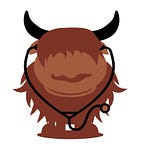Mehregan— The light of Mithra and the ancient Iranian Festival of Autumn
A day for nature, love and friendship
Norouz (Spring), Yalda (Winter), Mehregan (Autumn) and Tirgan (Summer) comprise the four ancient Pre-Islamic Iranian festivals heralding the changing of seasons. They have been celebrated for between 3–4 millenia.
Mehregan falls on the 196th day of the calendar year (this year Friday 2nd October), and honours Mithra — the god of friendship, love and affection. Although Norouz and Yalda remain well-celebrated after thousands of years, the awareness of Mehregan and Tirgan has waned over recent centuries.
Which is a shame, as these ancient celebrations have a timeless message. One of not just kindness and hope, but also of fostering and consolidating relationships — with family, with friends, with lovers.
Mythology of Mithra
Mithra/Mitra was the god of the world’s creation, and this festival is dedicated to nature and love of the Earth. Mithra was also a symbol of light, and so faith, kindness, friendship and love are also celebrated.
Mithra’s impact in the ancient world was so substantial that there was a section of the ancient Iranian religious text (The Avesta) called Mehr-Yasht, a poetic worship of him. He was co-opted as a Roman god, and eventually Mithraism became a religion in the Hellenic and Roman world during the 3rd century AD. It became an official religion in Britain, Germany, Spain and parts of the Danube. Interestingly, Christmas Day was also the same day as Mithra’s birthday.
Mithra’s followers believed that he defeated darkness and evil, a scene which is shown as a lion triumphant over a bull. It was this day when the great hero Fereydoun used the light of Mithra to overcome the tyrannical king Zahak
The Celebration of Mehregan
Mythology aside, Mehregran remains an important festival of the Autumn Equinox, analogous to harvest or thanksgiving festivals.
“They consider Mehregan as a sign of resurrection and the end of the world, because at Mehregan that which grows reaches perfection.” Biruni, 973–1050, Scholar
The festival has an abundance of symbolism for nature and revival. Typically, a purple or burgundy-coloured cloth is covered by flowers which bud for long periods of time during the year. The sides of this are decorated with dry wild marjoram. Family and friends throw wild marjoram, lotus and sugar plum seeds over each other’s heads, and copious amounts of sharbat is drunk.
Elements of the spread/sofreh each represent a particular belief or hope during this time:
A scale symbolizes autumnal equinox, silver coins represent prosperity.
A copy of the Avesta represents the religious origin of the day.
A burner is set aside for frankincense and espand (Syrian rue seeds) to anticipate good omens.
There is some reading of poetry, particularly the historical epic the Shahnameh, and music features heavily. The Oud is a lute-like instrument popular throughout the Middle East and is strongly associated with Mehregan.
Historically, the King of Persia wore a robe during Mehregan, and gave away all his Summer clothes. In contemporary times, people sport new clothes in a homage to this. It is typical to dress for the occasion, and the ancient eyeliner known as sormeh/kohl is also used to complement a new outfit.
The food consumed in Mehregan represent the spoils of the harvest. Fruits represent abundance: typically grapes, apples, pomegranates and also nuts such as pistachios and almonds. Roasted mutton is eaten, and often distributed freely to the poor and needy.
Legacy
Mehregan and Tirgan (Dedicated to Tishtraya the God of rain) may not have the importance they once had.
“Some people have given the preference to Mihragān over Nowruz, by as they prefer autumn to spring”. Biruni, 973–1050
However, babies born on this day still have the word “Mehr” incorporated into their name: Mehrnoush, Mehrangiz, Mehrab, Mehrgan, Mehraban, Mehrazar are some examples.
In an era which is crying out for renewal, perhaps it is time to re-appraise this day.
“They consider Mihragān as a sign of resurrection and the end of the world, because at Mihragān that which grows reaches perfection” Biruni
